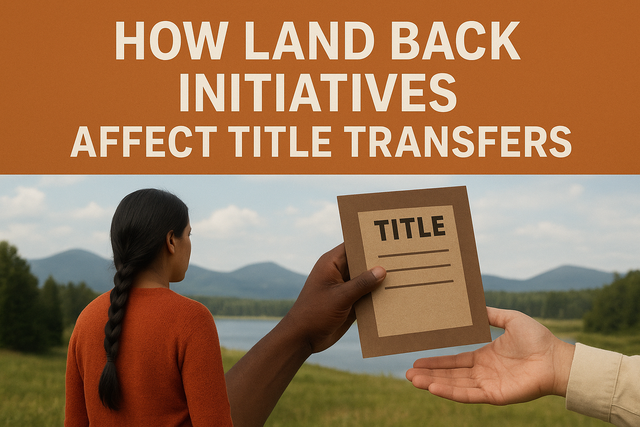
How Land Back Initiatives Affect Title Transfers
The concept of land back initiatives is increasingly influencing the legal and financial dynamics of property ownership, particularly in regions where Indigenous land claims intersect with modern real estate transactions. These initiatives call for the return of lands to Indigenous stewardship, either through negotiated settlements, government policy, or voluntary transfers. For individuals exploring opportunities in dynamic markets, such as Toronto Rentals, the intersection of Indigenous rights and property law introduces new considerations that can affect ownership certainty and investment decisions.
Table of Content
Intersection of Indigenous Claims and Property Law
Title transfers traditionally rely on clear ownership records supported by registries, deeds, and surveys. Land back initiatives, however, introduce a parallel framework where Indigenous legal traditions and unresolved claims can challenge the legitimacy of conventional ownership. When property lies within a territory subject to active claims, transfers may face heightened due diligence requirements. Buyers, lenders, and insurers are increasingly seeking assurance that transactions do not conflict with ongoing reconciliation or restitution efforts.
Implications for Developers and Municipalities
Developers considering projects on lands that overlap with claims must navigate complex negotiations. Municipal planning departments may also withhold permits until Indigenous consultation obligations are met. This legal layer has shifted title transfers from being a straightforward contractual process to one that requires engagement with Indigenous governance systems. These interactions reshape the timetable, risk profile, and even feasibility of certain projects.
Financial Risks and Valuation Adjustments
From a financial standpoint, properties encumbered by unresolved claims may experience discounted valuations or limited financing options. Lenders and equity partners consider the potential for legal disruption when assessing project viability. In certain cases, indemnity clauses or government guarantees are sought to mitigate the risks associated with title transfers in contested zones. This dynamic underscores how land back initiatives influence not just ownership rights, but also market perceptions of stability and value.
Practical Impact on Individual Buyers
For individual purchasers, the effect is less about valuation and more about certainty. Title insurance policies may explicitly exclude coverage for disputes related to Indigenous claims, creating exposure for buyers if challenges arise post-closing. Legal practitioners advising clients on purchases in affected areas now emphasize expanded due diligence, including reviews of governmental negotiations, settlement agreements, and consultation records.
Policy and Future Considerations
Governments are beginning to codify consultation and restitution obligations within the land registry process itself. These measures aim to balance market certainty with reconciliation goals. For instance, registry annotations or disclosure requirements may be implemented to alert future buyers of claims. Such reforms integrate Indigenous legal realities directly into the property system, rather than treating them as external disputes.
Final Thoughts
Land back initiatives are redefining how ownership and stewardship intersect in real estate. While they introduce complexity into title transfers, they also represent a necessary evolution toward aligning property law with broader social and historical realities. For investors, developers, and homebuyers, understanding these dynamics will be essential to navigating the future landscape of property ownership.


